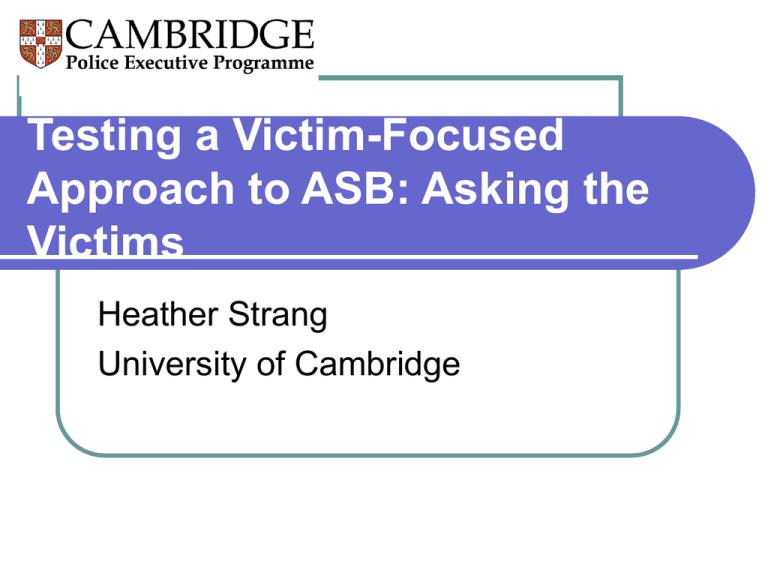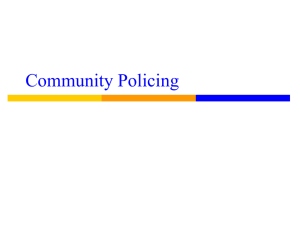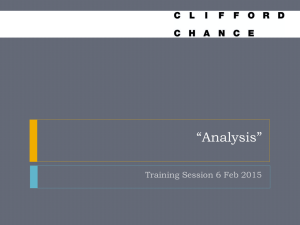hstavfatoASBEBP - University of Cambridge
advertisement

Testing a Victim-Focused Approach to ASB: Asking the Victims Heather Strang University of Cambridge Why do we need to measure what victims think? Because of what we know about victim dissatisfaction with the justice system Because this is a victim-centred approach Because only by measuring the impact of ASB on victims lives and of the police response can we find out the best approach – and cost-benefit What do we know about what victims want? Research shows that victims say they want: To be treated by police with fairness and respect To be kept informed by the police To have a say in how their problem is dealt with To get an apology from the person who has harmed them Questionnaire developed from: Close consultation with WMP - what do we need to know to judge success of Programme from victims’ perspective? Some questions from British Crime survey and ‘Feeling the Difference’ (WMP) survey Some questions from prior victim attitude surveys The questionnaire: 1) measures about What kind of problem? Who was affected? What kind of harm? The questionnaire: 2) Measures about police response How long did it take for police to respond? How long did they spend with you? What did they do? Did the police take the problem seriously? How polite, interested and sympathetic were the police? How satisfied were you with the police response? Was the problem resolved? 3) For incidents prior to target incident: All these victims had called police before on ASB complaints How many previous incidents not reported to police – and why As baseline measure we need to know how satisfied they were with the police response on prior occasions. 4) For incidents since target incident: How many new incidents since? Were all/some/none reported to police? Will give more measures of difference between E and C groups (hopefully, in E groups fewer new incidents but all reported) 5) General views on the police: How do you feel about the effectiveness of the police in your neighbourhood generally? How safe do you feel when you are walking in your neighbourhood, in the daytime and at night? Who are we asking? In Birmingham South and Coventry potentially 1600 respondents – 2 sites x 2 groups (E and C) – 400 cases in each group BUT, police have written to all victims asking them to advise if they do not wish to be interviewed Aiming for 80% response rate How are we conducting the survey? University of Birmingham the successful bidder Close liaison between WMP, Cambridge and the UB interviewers Interviewing began two weeks ago Progress so far: 218 cases worked on so far (all in B’ham South) 50 interviews completed Some refusals but most not yet contacted To date contact attempted only 9am-6pm (weekend work to commence now) Most contacted so far are people looking after children at home, unemployed, shift workers, retired/elderly people. What do we know so far? Little to say from small number of interviews Most interviewees say their problem relates either to neighbour disputes or to young people causing nuisance problems Problems so far? Telephone not satisfactory medium for people with hearing/intellectual disability/drug problems/language problems These people will be interviewed face to face by appointment Possible differential response rates by E and C caused by much higher levels of satisfaction with the E treatment Bottom line: Careful consultation with WMP on questionnaire design ensures we’ll get the information needed for policy purposes Close ongoing relationship with U B’ham and operational teams –weekly reporting On track for obtaining the victim data essential to judging the value of the Programme from victims’ perspective











